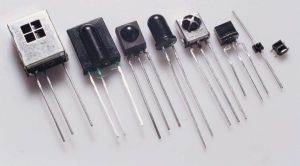The unassuming diode might be small, but its role in electronics is undeniable. Found in nearly every circuit, these components are the guardians of current flow. But how exactly do diodes function, and how can you ensure they’re operating flawlessly? This article empowers you with a deeper understanding of diodes, exploring their inner workings and providing guidance on testing them.
Demystifying Diode Function
Imagine a one-way street for electricity – that’s essentially what a diode does. It readily allows current to flow in one direction (forward bias), presenting minimal resistance. However, flip the direction (reverse bias), and the diode transforms into a formidable roadblock, significantly hindering current flow. This control over current direction unlocks a range of functionalities within circuits.

Beyond Rectification: Unveiling a Spectrum of Applications
While rectification (converting AC to DC) is a well-known application of diodes, their talents extend far beyond. Here’s a glimpse into their diverse capabilities:
- Current Tamers: Specific diodes, like Zener diodes, act as voltage regulators. When voltage surpasses a set limit, they allow excess current to flow around them, safeguarding circuits from damage.
- Signal Sculptors and Guardians: Diodes have the power to isolate specific sections of a circuit, preventing unwanted signal interference. Additionally, they can be employed to select or combine specific signals for precise control.
- Light Emitters: Light-emitting diodes (LEDs) showcase how diodes can transform electrical energy into light. This ability makes them invaluable components in displays and lighting applications.
Testing Diodes: Ensuring Proper Function
A malfunctioning diode can throw a wrench into your circuit’s operation. Thankfully, there are straightforward methods to test them. The most common approach involves a multimeter set to the diode testing function. By observing the current flow in both directions (forward and reverse bias), you can determine if the diode is functioning as intended.
Konklusion
Diodes, with their mastery over current flow, are the cornerstone of countless electronic devices. By understanding their function and testing procedures, engineers, technicians, electricians, and anyone working with circuits gain valuable troubleshooting skills. So next time you encounter a circuit, remember the crucial role these tiny components play in keeping everything running smoothly.
